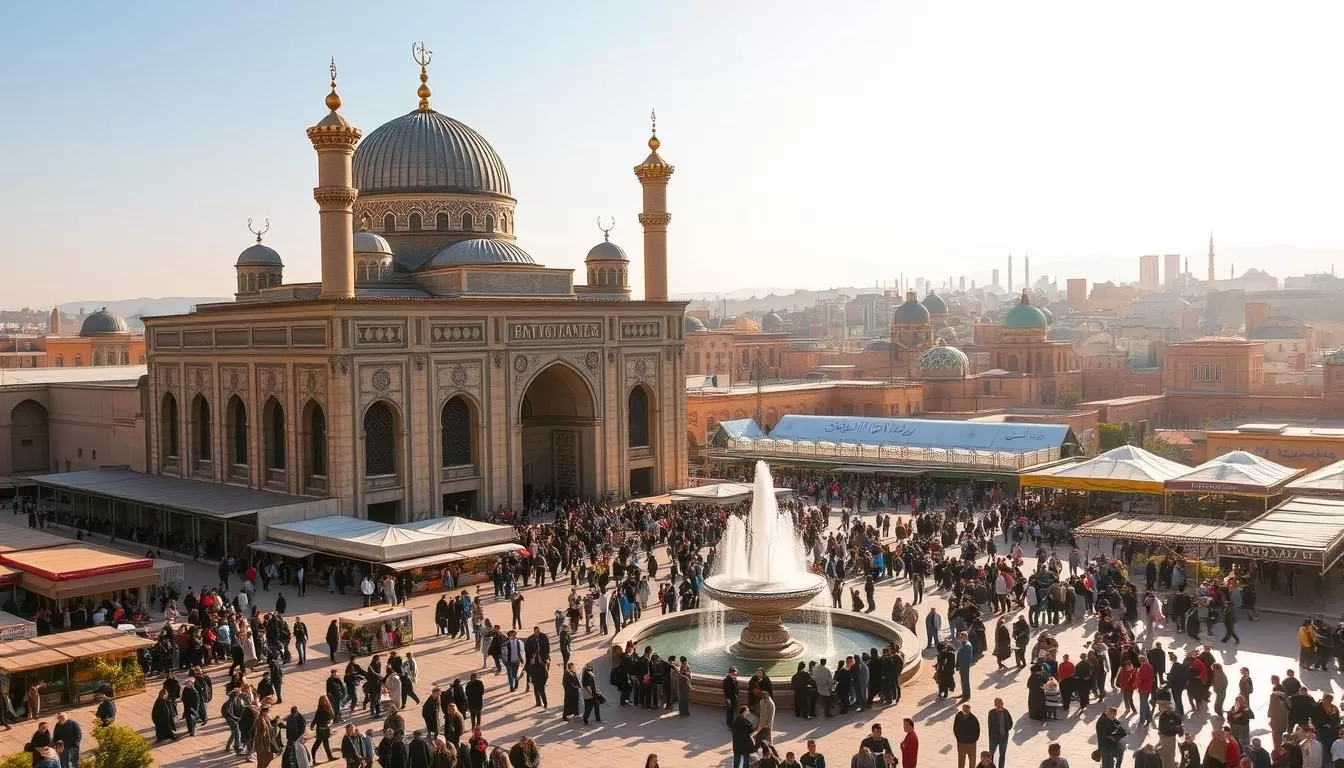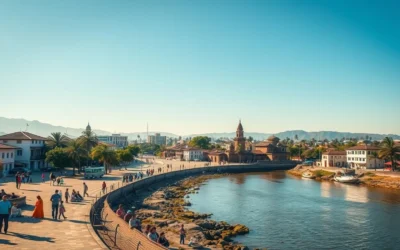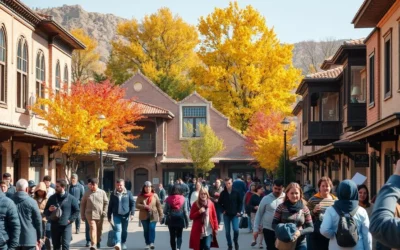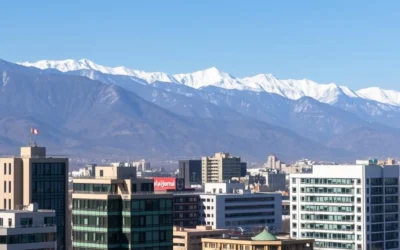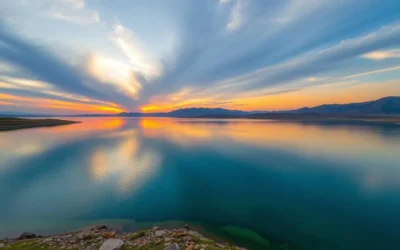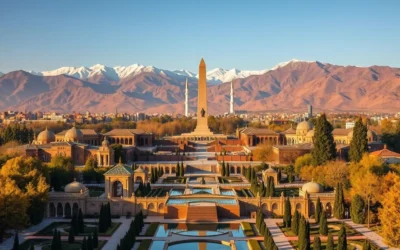✓ Accommodations✓ Flights✓ Rental Cars
Nestled just 125 kilometers south of Tehran, this city is a captivating blend of history, culture, and spirituality. Known as a spiritual capital, it attracts millions of guests each year, drawn to its sacred shrines and vibrant traditions.
With a desert climate, the best times to travel here are during spring and autumn, when temperatures are mild and the landscapes are at their most beautiful. Whether you’re exploring the bustling bazaars or marveling at the architectural wonders, this destination offers a unique experience for every visitor.
From the iconic Hazrat Masumeh Shrine to the serene Qom Salt Lake, there’s no shortage of places to explore. The city seamlessly combines ancient traditions with modern conveniences, making it an ideal spot for both pilgrims and travelers alike.
Overview of Qom – Iran’s Spiritual Capital
Known for its deep spiritual roots, this city is a treasure trove of history and culture. Over centuries, it has evolved into a hub of religious and social exchange, drawing millions of visitors annually. Its sacred sites, like the Hazrat Masumeh Shrine, play a pivotal role in shaping its identity as a spiritual capital.
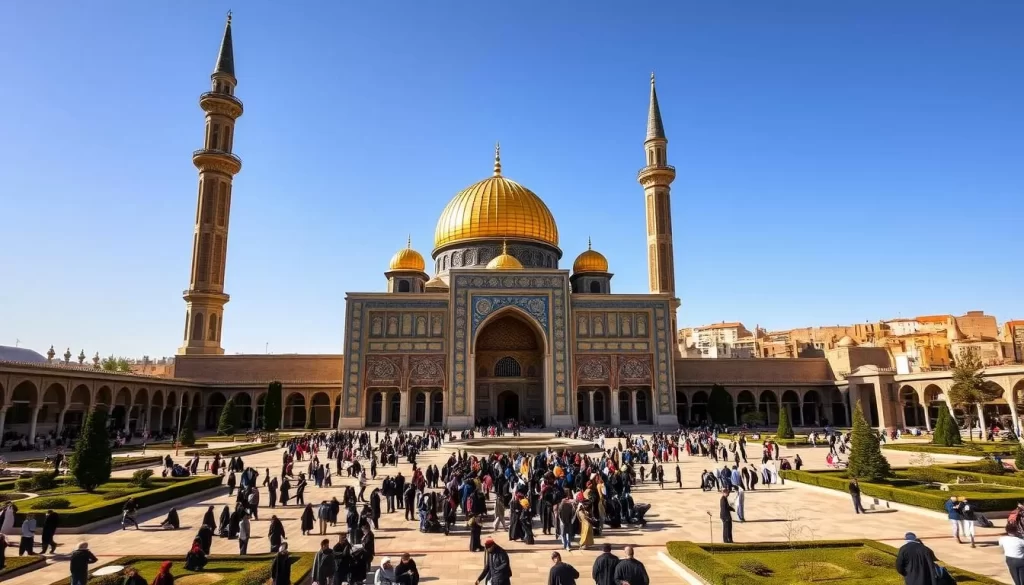
Discover Qom’s Rich Heritage and History
The city’s cultural heritage is reflected in its stunning artistic expressions. From intricate tile work to elegant calligraphy, every corner tells a story. The Hazrat Masumeh Shrine, adorned with breathtaking architecture, stands as a testament to its rich history.
Religious institutions here have played a significant role in shaping local traditions. These institutions not only preserve ancient practices but also adapt them to modern-day life. This blend of old and new offers a unique spiritual experience for visitors.
Here are some key highlights of Qom’s cultural and spiritual significance:
| Aspect | Details |
|---|---|
| Artistic Expressions | Tile work, calligraphy, and architectural marvels |
| Sacred Sites | Hazrat Masumeh Shrine and other holy shrines |
| Historical Context | Evolution of religious institutions over centuries |
| Modern Influence | Blending of ancient traditions with contemporary practices |
Whether you’re exploring its sacred sites or admiring its artistic wonders, this city offers a journey through time. Its cultural richness and spiritual depth make it a must-visit destination for anyone seeking a meaningful experience.
Historical and Religious Significance of Qom
With roots tracing back to the 8th century, this city has grown into a spiritual beacon. Its role as a major pilgrimage site has shaped its identity, drawing millions of visitors annually. The city’s rich history is deeply intertwined with its religious landmarks, making it a must-visit destination for those seeking a deeper connection to faith and culture.
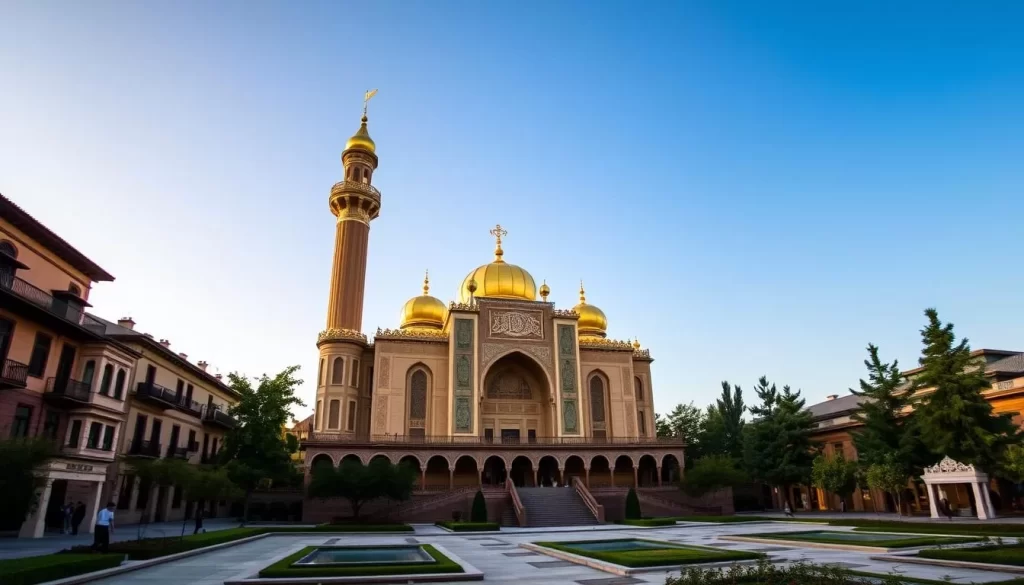
Explore the Hazrat Masumeh Shrine
The Hazrat Masumeh Shrine stands as a testament to the city’s spiritual and architectural legacy. Built in honor of Fatima Masumeh, sister of the 8th Shiite Imam, this shrine is a masterpiece of Islamic architecture. Its intricate tile work and elegant calligraphy reflect the artistic traditions of the Safavid dynasty, offering visitors a glimpse into the past.
As one of the most revered pilgrimage sites, the shrine attracts devotees from around the world. Its serene atmosphere and stunning design make it a place of reflection and reverence. Whether you’re drawn by faith or curiosity, this site leaves a lasting impression.
Uncover the Legacy of Jamkaran Mosque
Located just 6 kilometers from the city center, the Jamkaran Mosque is another iconic site of religious significance. Known for its association with Imam Zaman, this mosque has become a hub for spiritual gatherings, especially on Tuesday nights. Its modern expansions, funded by generous donations, have enhanced its capacity to welcome pilgrims.
The mosque’s design blends traditional Islamic architecture with contemporary elements, creating a harmonious space for worship. Its historical roots and spiritual importance make it a key stop for anyone exploring the city’s religious landscape.
From its ancient origins to its modern-day prominence, this city continues to inspire visitors with its blend of history and faith. Whether you’re marveling at the Hazrat Masumeh Shrine or reflecting at the Jamkaran Mosque, you’ll find a deeper connection to the spiritual heart of this destination.
Qom, Iran: Best Things to Do – Top Picks
Every corner of this city reveals a story of heritage and devotion. From sacred shrines to scenic landscapes, the attractions here are as diverse as they are captivating. Whether you’re drawn to its spiritual significance or its natural beauty, this place offers something for everyone.
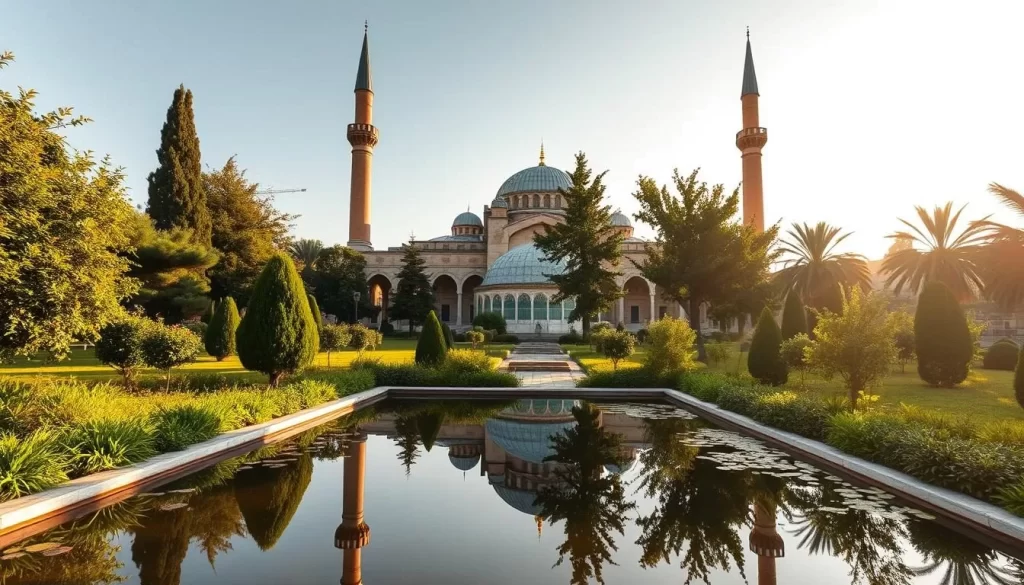
Must-Visit Attractions and Landmarks
Start your journey at the Hazrat Masumeh Shrine, a masterpiece of Islamic architecture. Its intricate tile work and serene atmosphere make it a must-see attraction. Nearby, the Jamkaran Mosque offers a blend of traditional and modern design, creating a harmonious space for reflection.
For a change of pace, head to the Qom Salt Lake. This natural wonder provides stunning views, especially during sunrise and sunset. Don’t forget to bring your camera to capture the breathtaking scenery.
A Pilgrimage of Culture and Spirituality
This city is more than just a spiritual hub; it’s a cultural treasure trove. The workshops producing Kharmohre, a unique turquoise ceramic, are a testament to its artistic legacy. Visiting these workshops offers a glimpse into the craftsmanship that defines this place.
Here’s a tip: Plan your visit during spring or autumn for the best weather. This ensures you can explore both indoor and outdoor attractions comfortably. Whether you’re marveling at historic buildings or soaking in the natural views, every moment here is unforgettable.
Navigating Qom – Transportation and Local Tips
Getting around this historic city is easier than you might think, with multiple transportation options available. Whether you’re arriving from Tehran or exploring locally, this guide will help you plan your trip smoothly.
Access Routes from Tehran and Beyond
The Tehran-Qom Freeway is the most convenient route, taking just over an hour by car. Public buses also run frequently, offering an affordable way to travel between the two cities. For a quicker option, consider booking a domestic flight or using ride-sharing services like Snapp or Tap30.
If you’re arriving from other locations, the extensive railway network provides comfortable and budget-friendly travel. Plan your day ahead to make the most of your journey.
Local Navigation and Getting Around Qom
Once you’re in the city, taxis are a reliable way to get around. They’re widely available and affordable, making it easy to explore different locations. For a more local experience, try the public bus system, which includes designated sections for women and children.
Walking is another great option, especially in the city center. Many attractions are within close proximity, allowing you to soak in the atmosphere as you explore. Keep in mind that the best time visit is during spring or autumn, when the weather is mild and comfortable.
Here are some tips to enhance your trip:
- Carry small change for taxis and buses.
- Plan your day to avoid peak traffic hours.
- Use a map app for easy navigation.
With these insights, yourtransportationexperience will be seamless, allowing you to focus on enjoying your visit.
Traditional Bazaars and Cultural Encounters
Step into the vibrant heart of Qom’s cultural scene with its bustling bazaars. These marketplaces have long been the center of commerce and tradition, offering a glimpse into the city’s rich heritage. From handmade crafts to unique souvenirs, every corner tells a story of artistry and dedication.
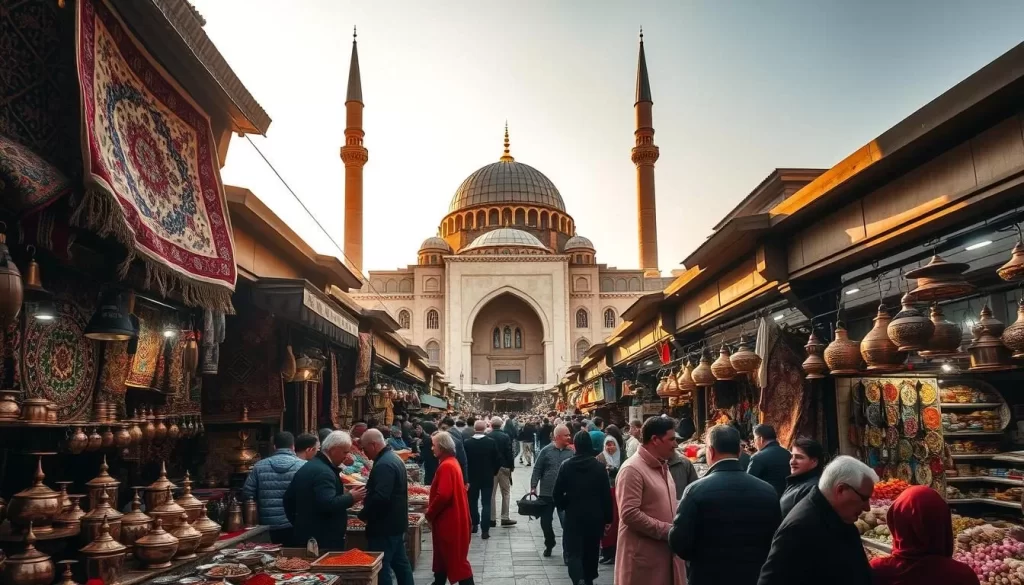
Explore the Bustling Marketplaces
Wander through the narrow alleys of Qom’s bazaars, where the air is filled with the scent of spices and the sound of lively chatter. These marketplaces are not just shopping destinations; they are cultural hubs where locals and visitors connect. You’ll find a wide range of choices, from intricate pottery to beautifully painted tiles.
One of the highlights is the traditional Persian bead work, a craft that has been passed down through generations. These beads are often used in jewelry and decorative items, adding a touch of elegance to any piece. The vibrant colors and intricate designs make them a popular choice for souvenirs.
Find Unique Souvenirs and Artisanal Crafts
When it comes to souvenirs, Qom’s bazaars offer something truly special. Look for handcrafted items like ceramic bowls, embroidered textiles, and turquoise jewelry. These pieces reflect the city’s artistic traditions and make for meaningful keepsakes.
Here’s a tip: Take your time to explore and interact with the artisans. They often share fascinating stories about their craft, adding depth to your shopping experience. Whether you’re looking for a small token or a statement piece, the bazaars have something for everyone.
| Type of Craft | Description |
|---|---|
| Pottery | Handmade ceramic items with intricate designs |
| Tile Painting | Beautifully painted tiles showcasing Persian art |
| Persian Beads | Colorful beads used in jewelry and decorations |
| Textiles | Embroidered fabrics with traditional patterns |
For more insights into the cultural richness of Iran’s markets, check out this exploration of ancient and modern Persia. It’s a great resource to deepen your understanding of the region’s vibrant traditions.
Discovering Natural Wonders: Qom Salt Lake and Beyond
Experience the mesmerizing allure of Qom Salt Lake, a natural wonder in the desert. This stunning destination offers a unique blend of tranquility and adventure, making it a must-visit for nature enthusiasts. The salt flats stretch endlessly, creating a surreal landscape that feels almost otherworldly.
The lake is particularly famous for its breathtaking views during sunrise and sunset. The interplay of light and shadow on the salt formations creates a photographer’s paradise. Whether you’re a professional or an amateur, you’ll find endless inspiration here.
Best Viewing Spots at Sunrise and Sunset
For the most captivating experience, plan your visit during the golden hours. The soft hues of dawn and dusk transform the salt lake into a canvas of vibrant colors. Bring a tripod to capture the perfect shot, and don’t forget to explore different angles for unique perspectives.
Photography and Safety Guidelines
While the desert landscape is stunning, it’s essential to stay safe. Wear sturdy shoes to navigate the uneven terrain, and carry plenty of water to stay hydrated. Avoid walking on the salt flats during midday, as the heat can be intense.
For photography enthusiasts, consider joining the Iran Photography Tour. This guided experience offers expert tips and access to the best spots for capturing the beauty of the qom salt lake and other iconic locations.
Whether you’re drawn by the serene atmosphere or the dramatic scenery, the lake promises an unforgettable adventure. Take your time to explore and appreciate the raw, untouched beauty of this natural wonder.
Culinary Journey – Taste the Flavors of Qom
Embark on a flavorful adventure through the heart of Persian cuisine. The city’s food scene is a vibrant blend of ancient recipes and modern twists, offering a taste of its rich cultural heritage. From hearty stews to delicate sweets, every dish tells a story of tradition and creativity.
Savor Traditional Dishes Like Abgoosht-e Havij Barge
One of the must-try dishes is Abgoosht-e Havij Barge, a savory stew made with lamb, carrots, and aromatic spices. This dish is a testament to the region’s culinary artistry, combining simple ingredients into a flavorful masterpiece. The slow-cooking process allows the spices to infuse, creating a rich and comforting meal.
For the best time to enjoy this dish, visit local eateries during lunch hours. Many restaurants prepare it fresh daily, ensuring an authentic taste. Pair it with warm bread and a side of yogurt for a complete experience.
Indulge in Qom’s Sweet Delights
No culinary journey is complete without sampling the city’s sweet treats. Sohan, a saffron brittle toffee, is a local favorite. Its crunchy texture and rich flavor make it a perfect souvenir or dessert. Another highlight is Gaz, a nougat made with pistachios and rosewater, offering a delicate balance of sweetness and aroma.
These sweets are often enjoyed with a cup of Persian tea, creating a moment of relaxation and indulgence. For the best time to try them, visit traditional bakeries in the morning when they are freshly made.
| Dish | Key Ingredients | Best Time to Try |
|---|---|---|
| Abgoosht-e Havij Barge | Lamb, carrots, spices | Lunch hours |
| Sohan | Saffron, sugar, pistachios | Morning |
| Gaz | Pistachios, rosewater, egg whites | Morning |
To explore more iconic Persian dishes, check out this guide to the 10 best Persian foods to try. It’s a great resource for anyone looking to dive deeper into the region’s culinary traditions.
Unique Artisan Workshops and Craft Experiences
Immerse yourself in the heart of Qom’s artistic traditions with hands-on craft workshops. These experiences allow you to connect deeply with the city’s cultural heritage, offering a chance to create something truly unique. Whether you’re designing traditional tiles or crafting Persian blue beads, these workshops are a treasure for any tourist seeking a meaningful experience.
Create Your Own 7-Color Tile or Pottery
Step into a world of vibrant colors and intricate designs by crafting your own 7-color tile. This traditional art form, known as Haft-rang, has been practiced for centuries. You’ll learn the techniques behind this craft, from shaping the clay to applying the final glaze.
These workshops provide all the materials and guidance you need. By the end, you’ll have a beautiful piece of pottery to take home. It’s a perfect way to bring a piece of Qom’s artistic heart into your life.
Learn the Secrets of Persian Blue Beads
Discover the fascinating process behind Persian blue beads, a craft unique to this region. These beads are known for their vibrant color and intricate patterns. In the workshop, you’ll learn how to shape, paint, and polish them to perfection.
This hands-on experience is not just about creating art; it’s about understanding the cultural significance behind it. The beads are often used in jewelry and decorative items, making them a cherished treasure for locals and visitors alike.
| Workshop | Key Features | Duration |
|---|---|---|
| 7-Color Tile Making | Learn traditional Haft-rang techniques | 2 hours |
| Persian Blue Beads | Shape, paint, and polish unique beads | 1.5 hours |
For more insights into the cultural richness of Iran’s artisan traditions, check out this Iran travel guide. It’s a great resource to deepen your understanding of the region’s vibrant crafts and cultural heritage.
Conclusion
Your journey through this spiritual city offers a unique blend of history, culture, and natural beauty. From the iconic shrine of Hazrat Masumeh to the serene landscapes of the salt lake, every moment here is filled with meaning and wonder.
The city’s deep-rooted spirituality and centuries-old traditions make it a must-visit destination for any traveler. Whether you’re exploring sacred sites or indulging in local crafts, you’ll find a connection to its rich heritage.
For a hassle-free visit, consider staying in one of the many accommodation options close to major attractions. Plan your trip during spring or autumn for the best weather and unforgettable experiences.
Ready to explore more? Check out this backpacking guide for tips on making the most of your adventure. This vibrant city awaits, promising memories that will last a lifetime.
The above is subject to change.
Check back often to TRAVEL.COM for the latest travel tips and deals.
